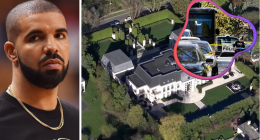The Most Barbaric Colonizers in History – The Bengal famine of 1943 was the final British-administered famine in India and claimed around three million lives. When Winston Churchill was asked to stop shipping desperately needed foodstuffs out of Bengal, he said Indians were to blame for their own deaths for ‘breeding like rabbits.’

Inside the palatial walls of Belgium’s Africa Museum stand statues of Leopold II – each one a monument to the king whose rule killed as many as 10 million Africans.
Standing close by, one visitor said, “I didn’t know anything about Leopold II until I heard about the statues defaced down town”.
The museum is largely protected by heritage law but, in the streets outside, monuments to a monarch who seized a huge swathe of Central Africa in 1885 have no such security.
Last week a statue of Leopold II in the city of Antwerp was set on fire, before authorities took it down. Statues have been daubed with red paint in Ghent and Ostend and pulled down in Brussels.
Leopold II’s rule in what is now Democratic Republic of Congo was so bloody it was eventually condemned by other European colonialists in 1908 – but it has taken far longer to come under scrutiny at home.
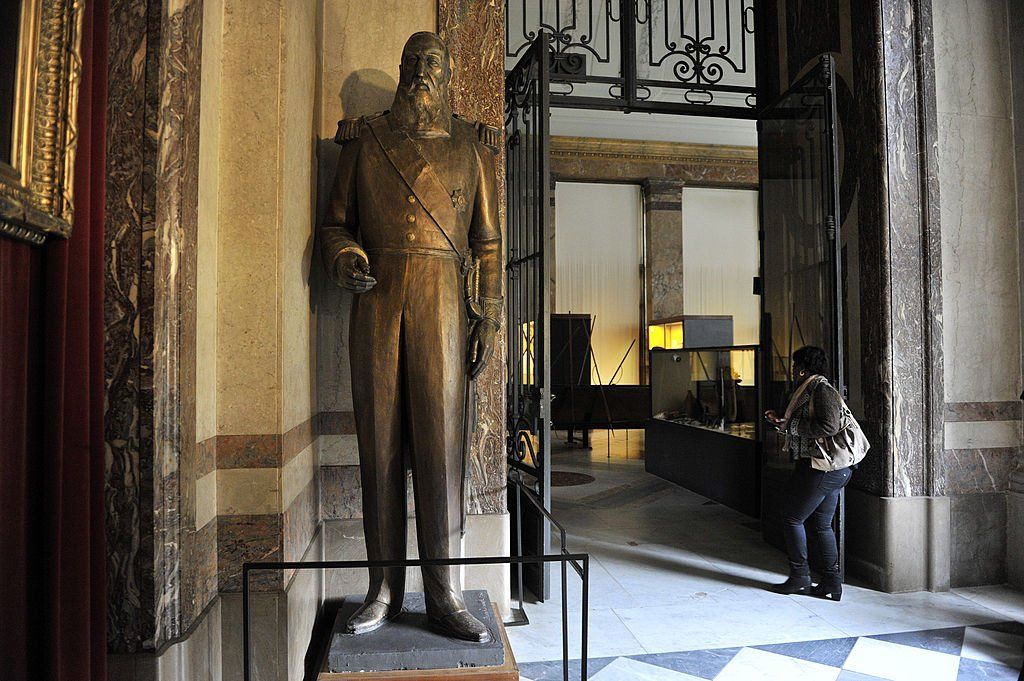
Last week thousands in the country of 11 million joined solidarity protests about the killing of US black man George Floyd in police custody.
A renewed global focus on racism is highlighting a violent colonial history that generated riches for Belgians but death and misery for Congolese.
“Everyone is waking up from asleep, it’s a reckoning with the past,” explains Debora Kayembe, a Congolese human rights lawyer who has lived in Belgium.
Statues defaced and removed
Like statues of racist historical figures vandalised or removed in Britain and the US, Leopold II’s days on Belgian streets could now be numbered.
On Monday the University of Mons removed a bust of the late king, following the circulation of a student-led petition saying it represented the “rape, mutilation and genocide of millions of Congolese”.
Joëlle Sambi Nzeba, a Belgian-Congolese poet and spokesperson for the Belgian Network for Black Lives, says the statues tell her she is “less than a regular Belgian”.
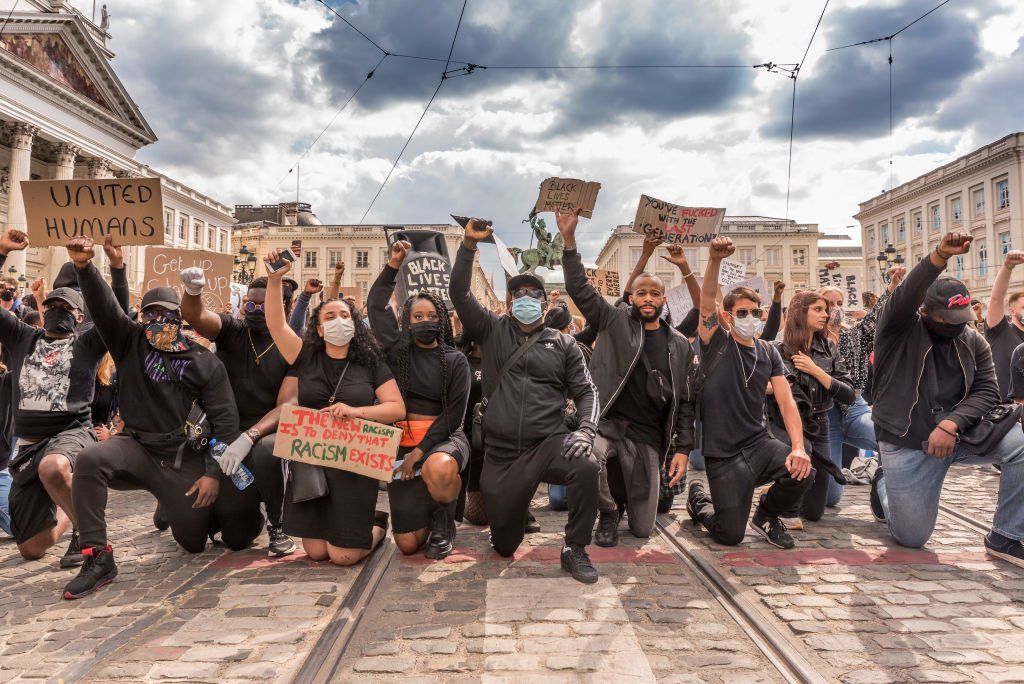
“When I walk in a city that in every corner glorifies racism and colonialism, it tells me that me and my history are not valid,” she explains from the capital.
For activists the holy grail is the giant statue of Leopold II on horseback at the gates of the Royal Palace in Brussels. A petition calling on the city for its removal has reached 74,000 signatures.
“I will dance if it comes down. I never imagined this happening in my lifetime,” Ms Kayembe adds. It would be “really significant for Congolese people, especially those whose families perished,” she explains.
She does not believe it will not be quick or easy. There are at least 13 statues to Leopold II in Belgium, according to one crowd-sourced map, and numerous parks, squares and street names.
Warning: This piece contains graphic pictures
One visitor to the Africa Museum, where an outdoor statue was defaced last week, disagreed with the idea of removing them – “they’re part of history,” he explained.
A king who still commands praise
On Friday the younger brother of Belgium’s King Philippe, Prince Laurent, defended his ancestor saying Leopold II was not responsible for atrocities in the colony “because he never went to Congo”. The royal palace is yet to give its own response.
For many years Leopold II was widely known as a leader who defended Belgium’s neutrality in the 1870-71 Franco-Prussian war and commissioned public works fit for a modern nation.
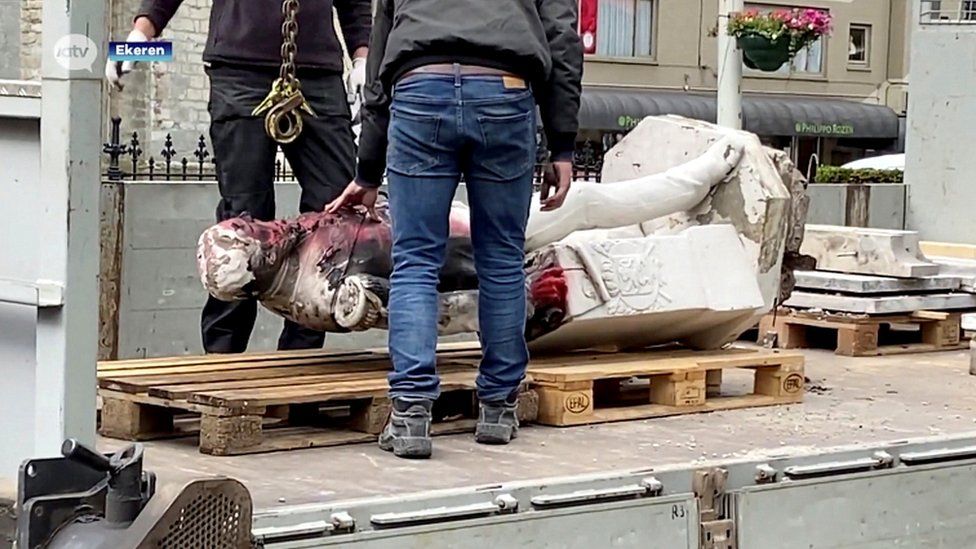
In 2010, former Belgian foreign minister Louis Michel and the father of future prime minister Charles Michel, called Leopold “a hero with ambitions for a small country like Belgium”.
In a TV debate this week, a former president of the Free University of Brussels, Hervé Hasquin, argued there were “positive aspects” to colonisation, listing the health system, infrastructure, and primary education he said Belgium brought to Central Africa.
Colony built on forced labour and brutality
“Civilisation” was at the core of Leopold II’s pitch to European leaders in 1885 when they sliced up and allocated territories in what became known as the Scramble for Africa.
He promised a humanitarian and philanthropic mission that would improve the lives of Africans.

In return European leaders, gathered at the Berlin Conference, granted him 2m sq km (770,000 sq miles) to forge a personal colony where he was free to do as he liked. He called it Congo Free State.
It quickly became a brutal, exploitative regime that relied on forced labour to cultivate and trade rubber, ivory and minerals.
Archive pictures from Congo Free State document its violence and brutality.

In one, a man sits on a low platform looking at a dismembered small foot and small hand. They belonged to his five-year-old daughter, who was later killed when her village did not produce sufficient rubber. She was not unique – chopping off the limbs of enslaved Congolese was a routine form of retribution when Leopold II’s quotas were not met.
Colonial administrators also kidnapped orphaned children from communities and transported them to “child colonies” to work or train as soldiers. Estimates suggest more than 50% died there.
Killings, famine and disease combined to cause the deaths of perhaps 10 million people, though historians dispute the true number.
Leopold II may never have set foot there, but he poured the profits into Belgium and into his pockets.
He built the Africa Museum in the grounds of his palace at Tervuren, with a “human zoo” in the grounds featuring 267 Congolese people as exhibits.
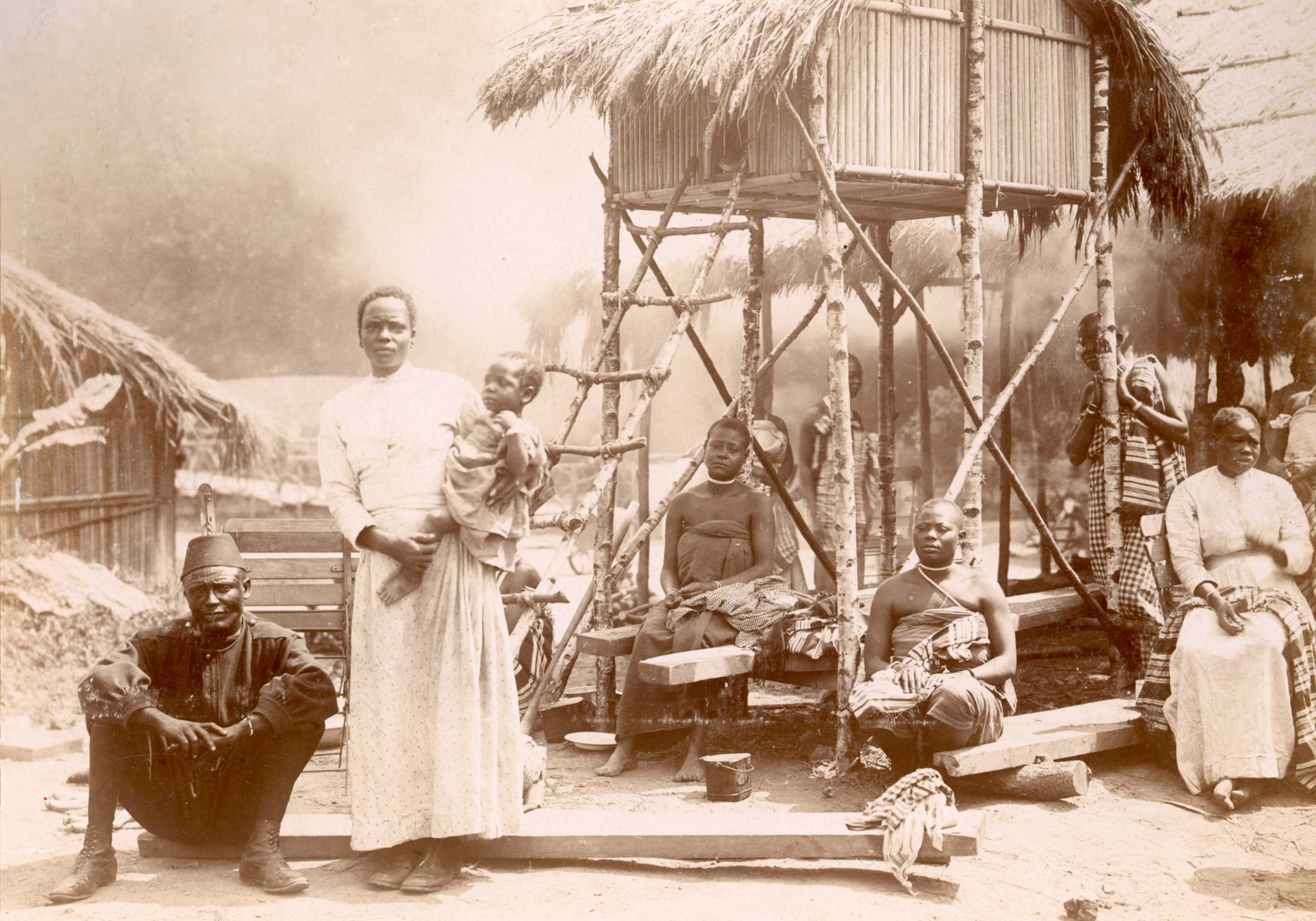
But rumours of abuse began to circulate and missionaries and British journalist Edmund Dene Morel exposed the regime.
By 1908, Leopold II’s rule was deemed so cruel that European leaders, themselves violently exploiting Africa, condemned it and the Belgian parliament forced him to relinquish control of his fiefdom.
Belgium took over the colony in 1908 and it was not until 1960 that the Republic of the Congo was established, after a fight for independence.
When Leopold II died in 1909, he was buried to the sound of Belgians booing.
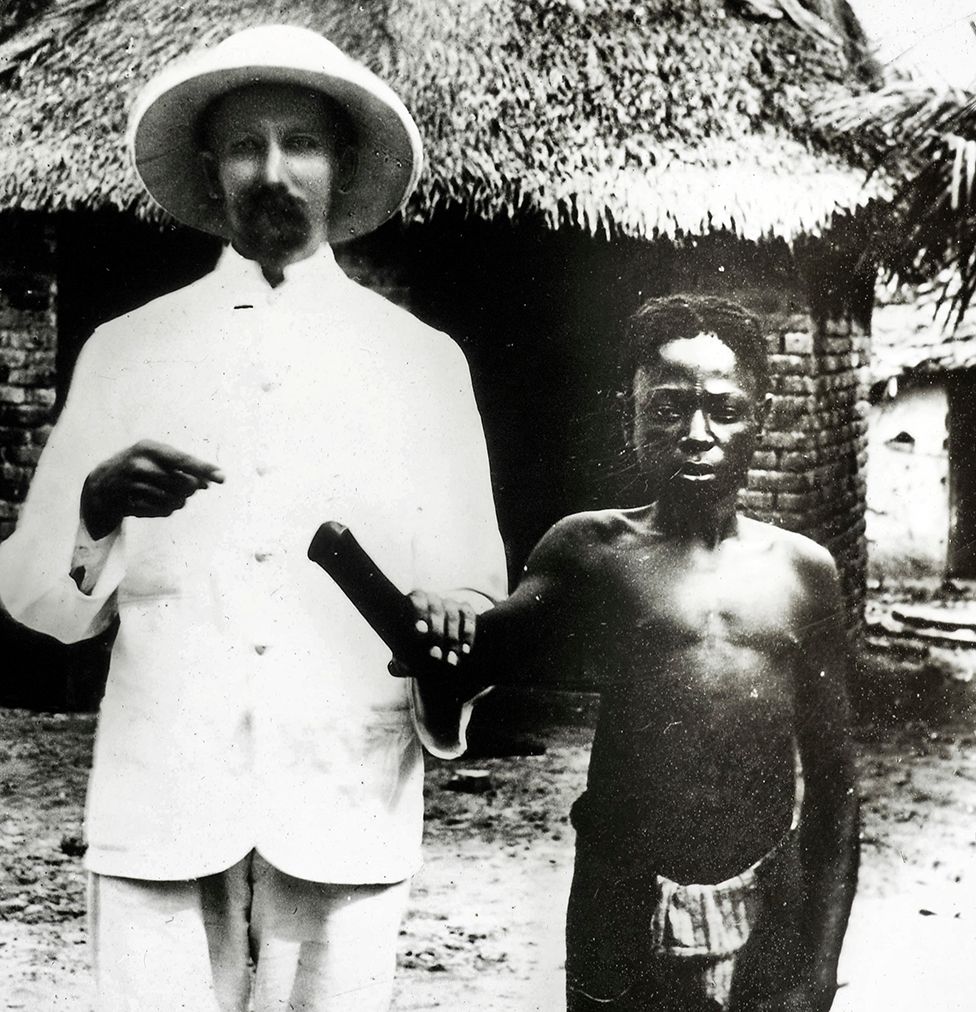 IMAGE SOURCE,ALAMY
IMAGE SOURCE,ALAMYBut in the chaos of the early 20th Century when World War One threatened to destroy Belgium, Leopold II’s nephew King Albert I erected statues to remember the successes of years gone by.
This makeover of Leopold’s image produced an amnesia that persisted for decades.
Calls for apologies
The current protests are not the first time Belgium’s ugly history in Congo has been contested in the streets.
In 2019, the cities of Kortrijk and Dendermonde renamed their Leopold II streets, with Kortrijk council describing the king as a “mass murderer”.
And in 2018, Brussels named a public square in honour of Patrice Lumumba, a hero of African independence movements and the first prime minister of Congo, since renamed the Democratic Republic of Congo.
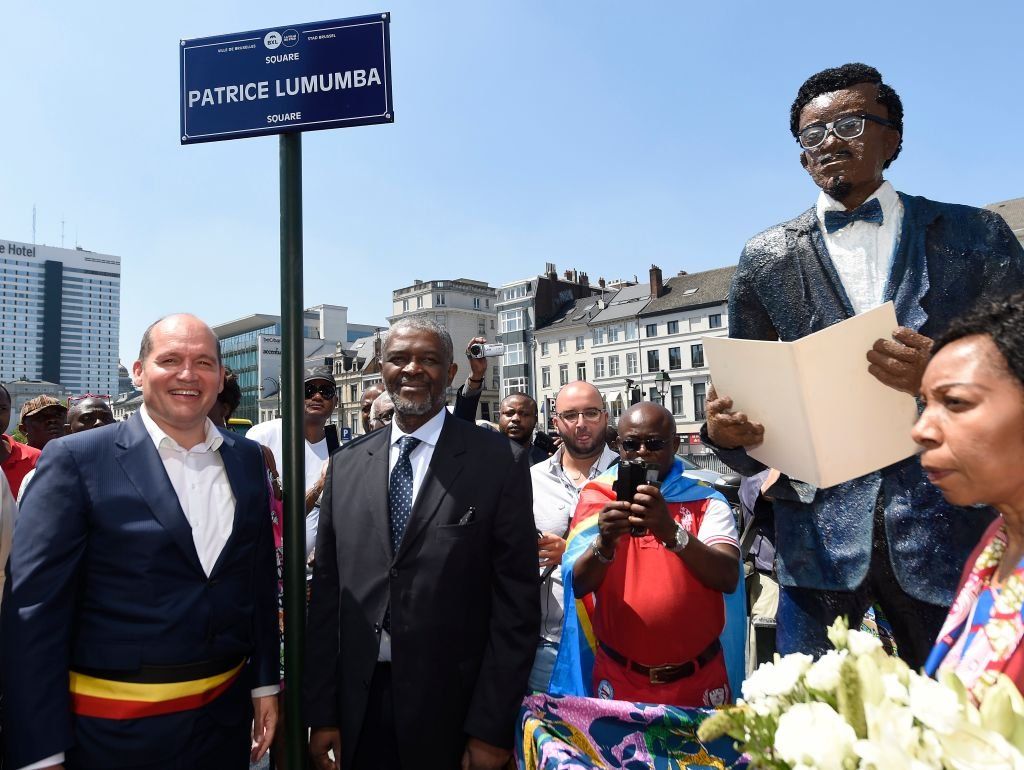
Last year a UN working group called on Belgium to apologise for atrocities committed during the colonial era.
Charles Michel, prime minister at the time, declined. He did however apologise for the kidnapping of thousands of mixed-race children, known as métis, from Burundi, DR Congo and Rwanda in the 1940s and 1950s. Around 20,000 children born to Belgian settlers and local women were forcibly taken to Belgium to be fostered.
What next for the statues?
Statues of Leopold II should now be housed in museums to teach Belgian history, suggests Mireille-Tsheusi Robert, director of anti-racism NGO Bamko Cran. After all, destroying the iconography of Adolf Hitler did not mean the history of Nazi Germany was forgotten, she points out.
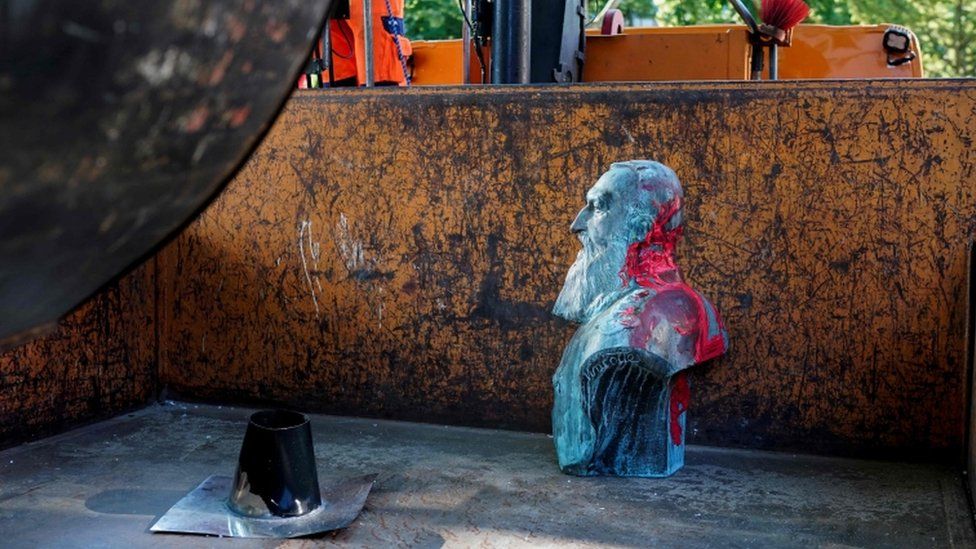
In Kinshasa, the capital of DR Congo, Leopold II’s statues were moved to the National Museum.
“Leopold II certainly does not deserve a statue in the public domain,” agrees Bambi Ceuppens, scientific commissioner at the Africa Museum. But taking the monument away does not solve the problem of racism, she believes, while creating one museum devoted to the statues would not be useful either.
In DR Congo itself, no-one has really noticed the Belgian protests, says Jules Mulamba, a lawyer in the south-eastern city of Lubambashi. He attributes colonial crimes to the king himself, rather than the Belgian people or state.
Beyond removal of statues, far more work is required to dismantle racism, protesters and black communities argue.
For decades, colonial history has been barely taught in Belgium. Many classrooms still have Hergé’s famous cartoon book Tintin in the Congo, with its depictions of black people now commonly accepted as extremely racist.
Belgium’s education minister announced this week that secondary schools would teach colonial history from next year.
“It’s a good thing that everyone is waking up, looking around and thinking ‘is this right?'” says Ms Kayembe.

Hitler is considered worse than King Leopold because he killed white people instead of black people
And it’s not too amazing to see so many pale skinned scholars on here say it “wasn’t deliberate” on Leopold II’s part, that he was “just” after money — like it was almost an type of accident. Greedy people, especially those who commit genocide, are always very deliberate. Leopold was simply smarter than Hitler in that he didn’t announce his intentions.
Hitler’s war dead don’t count. Europeans have been killing each other over land and power for centuries. The concentration camp dead, that’s who belongs in any sort of genocide count.
Leopold, who very deliberately killed 10 to 15 million Congolese in ONE COUNTRY simply hid his demonic wolf ass in sheep’s clothing.
Leopold used brown-skinned humans like they were disposable diapers or something. He used humans in ways that he KNEW was killing them. And, unlike chattel slavery used by whites in America, Leopold knew had an endless supply of slaves. He had no investment (in free labor) to protect. If one died? So what? Go find another one. He had the Congolese he enslaved using their own burning skin to collect rubber. He had hands cut off hands and arms as punishments.
Dead black enslaved bodies were a KNOWN byproduct of getting that rubber out of the Free State Of Congo and other things he wanted to steal from the Congolese. He was every bit as deliberate as Hitler, he just wasn’t as crazy.
Hitler, Mussolini, and Stalin are usually regarded as the most brutal dictators of the 20th century in history books. They are universally taught in American schools and we are instructed to regard them as the worst evil imaginable.
As for this piece of shit:

The reason we don’t talk about him as much is that he had the “decency” to only kill black people, and not [primarily] white people.
Not only is King Leopold II of Belgium not taught in school alongside brutal dictators of the past, for quite some time he was a respected historical figure. After his death in 1909, he was remembered mostly for his incredible economic achievements and many statues were erected in Belgium to honor his legacy. He was known as the “builder king” and hailed for his infrastructure projects throughout Belgium. During the George Floyd protests, several of his statues that still remain to this day were vandalized and called to be removed, and many other people still argue for them to remain. In 2020 many Belgians, Europeans, and even some Americans (although few here are aware of his existence) regard him as an important, and great historical icon.
Let’s run down what he did.
- First, he colonized the Congo, turning it into the Congo Free State.
- He exploited the Congolese for free labor.
- The primary exports from the region was rubber. To obtain the rubber he made the Congolese hack at trees until the rubber got on their skin, burning them. They would then have the rubber removed (cut off) from their skin.
- Congolese who didn’t comply would have their hands chopped off, or their families raped, or murdered, or raped then murdered, or would just be killed.
- The colonizers would collect their severed hands.
- By the end of the colonization period he had killed between 10–20 million Congolese, or roughly half the population.
- By the time he left Lingala became the dominant language in the Congo, a language once relegated to only a small part of the country. This would be akin to killing so many people in the United States that Creole became the dominant dialect.
By the end of his tenure, Belgium let him leave on his own terms and basically covered up his atrocities. I see a lot of answers here related his atrocities to manslaughter, whereas the others are first-degree murder and frankly this is ridiculous. That same logic is used by Holocaust deniers when talking about Hitler. King Leopold II absolutely knew what he was doing. Do people think he just accidentally allowed his men to start chopping off hands, raping, and murdering families, and murdering workers who didn’t comply? He knew exactly what he was doing and why he was doing it. Dictators always want power at the expense of others, and that is exactly what he did. The only difference is he did it to “others”.
The Maori of New Zealand.

In 1835, two Maori tribes from the Taranaki district, the Ngāti Mutunga and Ngāti Tama, decided to colonise the Chatham Islands, which they called Wharekauri in their own language. They acquired a pair of ships, assembled 900 warriors and enough supplies to plant crops and settle, and set off.
The Chatham Islands were already inhabited by the Moriori people, who numbered around 2,000 in total. When they arrived, the Maori kidnapped a 12-year old girl, cut her to pieces, and hung her various body parts from the trees as an official declaration of war on the Moriori.
The Moriori, however, isolated on their island, had no tradition of warfare and held a moral code that frowned on violence. They decided not to fight the Maori invaders, but to use passive resistance and non-violence. It might have worked for Gandhi, but it didn’t work against the Maori.

Frustrated of an honourable fight, the Maori warriors simply walked into the Moriori villages and started slaughtering people indiscriminately—men, women and children alike. Those who ran away were hunted down, hauled out of their hiding places, and killed.
The Maori then ritually cooked and ate some of the people they’d killed.
Next, they took about 200 women and children they’d captured alive, took them down to the beach, and staked them out on the sand to die. Those children and women lingered several days before they perished of thirst and exposure.
After several days of murder, cannibalism, and ritual torture, the Maori decided they’d won. They took all the women who were still alive and old enough to be raped, and shared them out between themselves. The Moriori men who’d survived the massacre were simply enslaved.
The Maori did not allow their male Moriori slaves to marry or have children. Within 30 years, 95% of the Moriori people were dead. Today, there are none left—apart from those people of mixed Maori-Moriori ancestry descended from the women taken as sex slaves.
There have been larger genocides, it’s true. But few of them ever attained the comprehensive scale, in terms of the proportion of the people deliberately killed, of this one. And since the Taranaki Maori didn’t establish all that many colonies, their record, in percentage terms, has to be the most barbaric of all.



